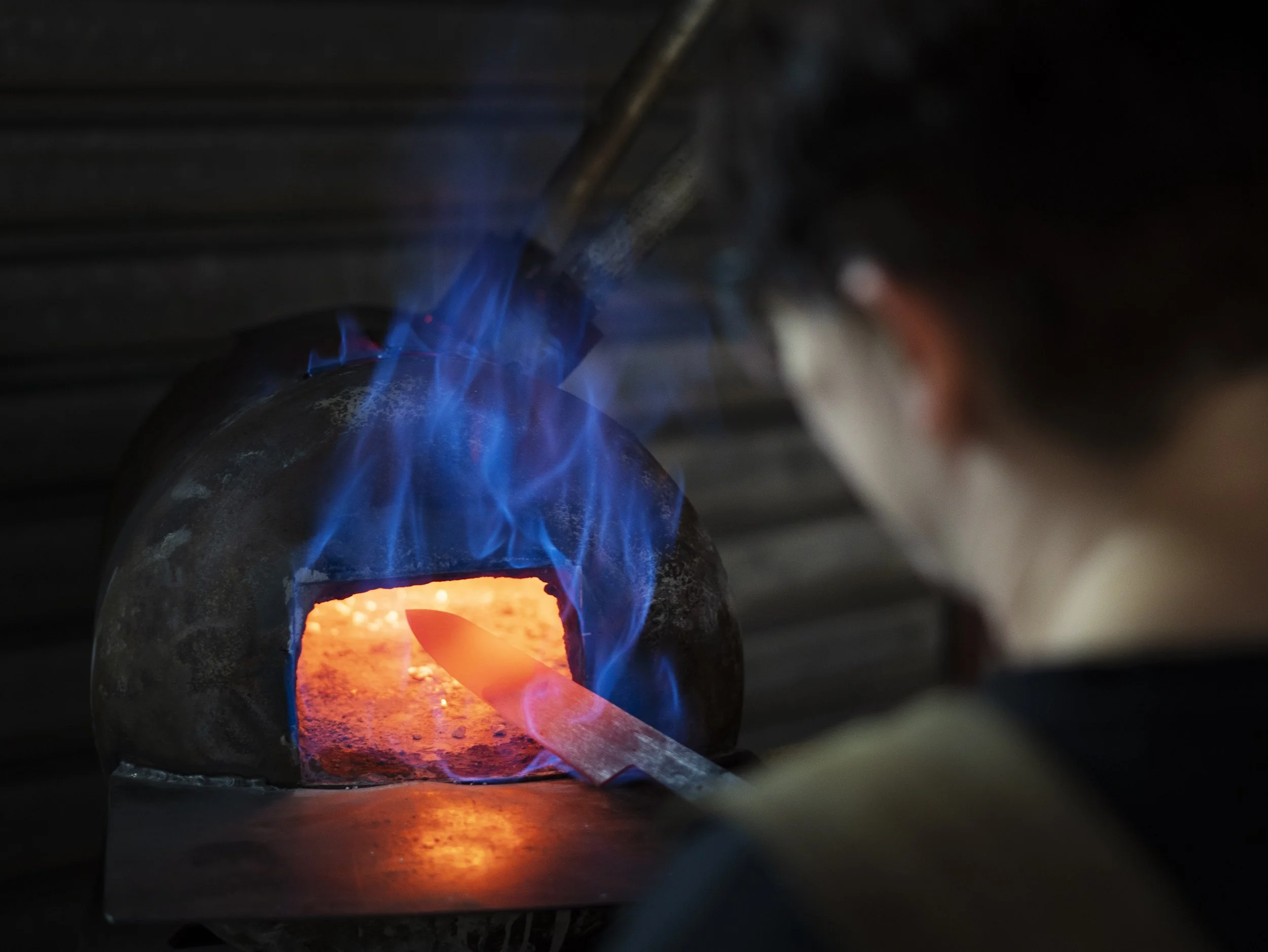My Knifemaking Process
Design.
Every knife I make begins with pencil and paper. Design is a crucial step to work out the balance and visual features of the knife, to play with proportions and profiles, colours and materials.
I like to sketch out a few variations on an idea and use them to make iterative improvements until I’m happy with the overall visual design. Then I transfer the design using tracing paper and create a cardboard (or even metal) template that will be used to keep the knife on track as I move through the process.
Heat.
The right heat treatment is crucial for defining the performance and characteristics of the knife, and for this I take a scientific approach to make sure that my heat treatment process is repeatable and consistent.
Heat treatment includes both heating and quenching the blade to harden the steel, then the subsequent tempering of the blade to reduce brittleness and increase toughness. The right balance of these characteristics, along with the geometry of the blade itself, determines how well it will perform for a specific task.
Shape.
I use a variety of steels in my knives, chosen for their own particular characteristics depending on the design and final purpose of the knife.
Forging is a key step for some blades such as damascus, san mai and other forge-welded blades, where the heat of the forge and pressure from hammering is required to combine different steels or other metals together and create the beautiful patterns you see in the final knife. However forging can result in uneven stresses in the steel, so for some knives it is more beneficial and consistent to take a stock removal approach where the blade is cut from a flat steel bar and then profiled to shape using a grinder.
Grind.
Following heat treatment I get to work with the grinder to further shape the blade and create the bevels. Once I’m happy with the profile and overall geometry, I work my way up through increasingly finer grits on the grinder to refine the blade and then move to hand sanding to create the final finish. This can take a really long time - so it’s good to have some good music or a podcast to listen to!




